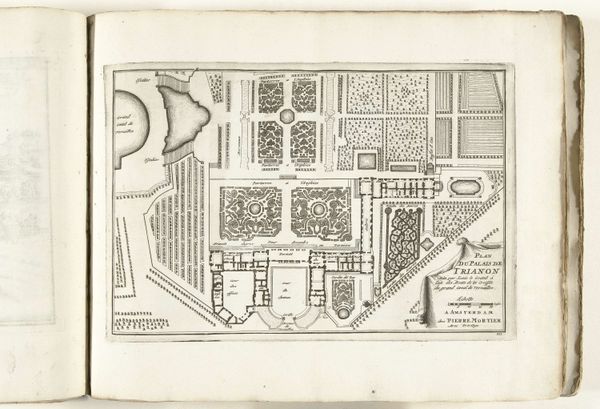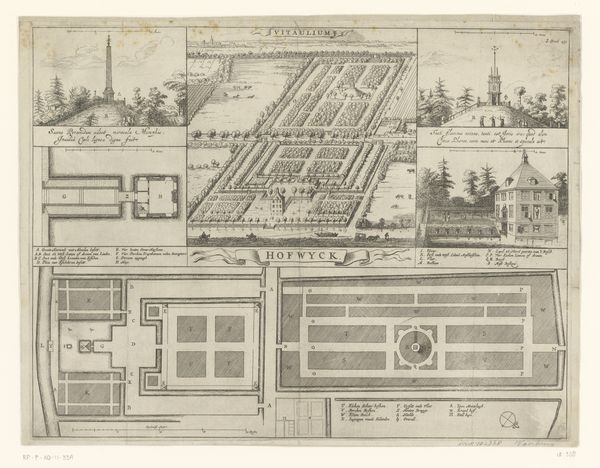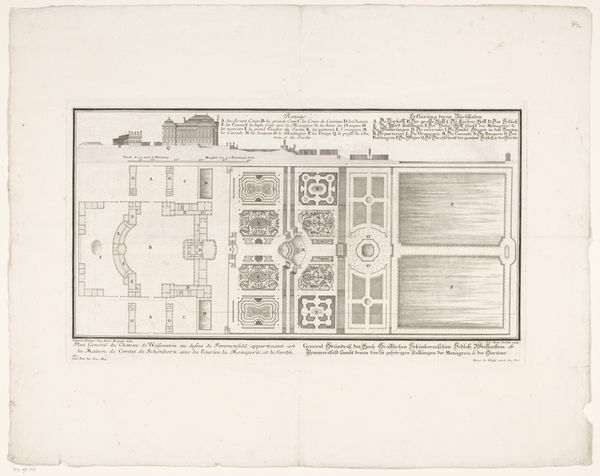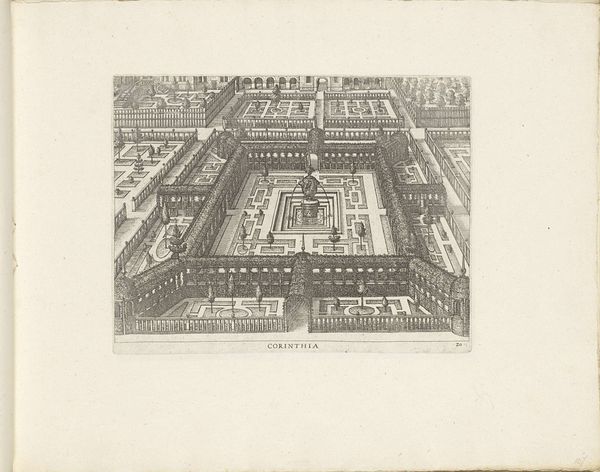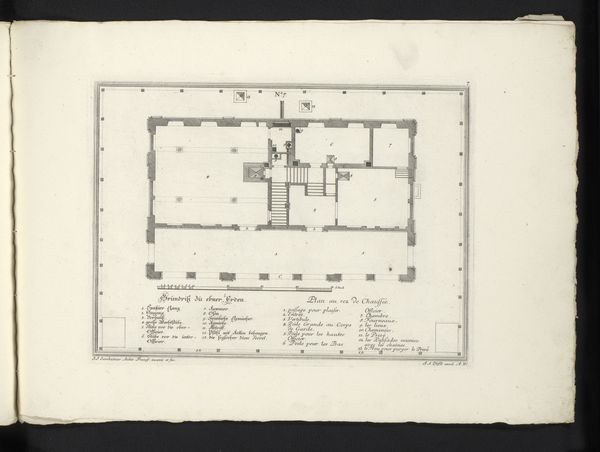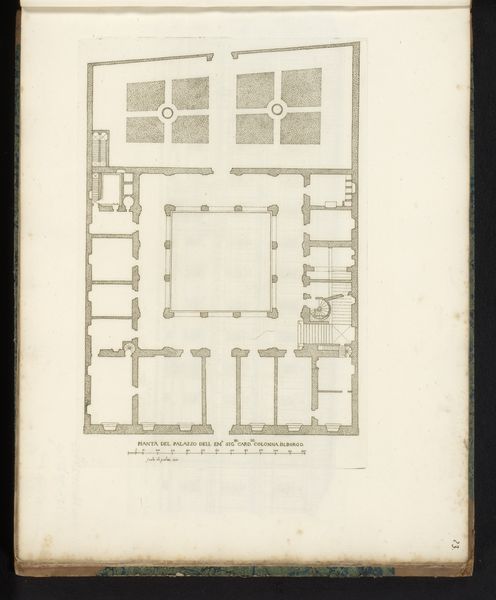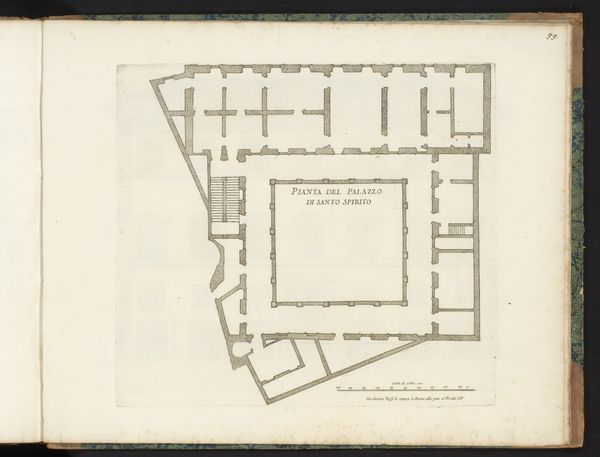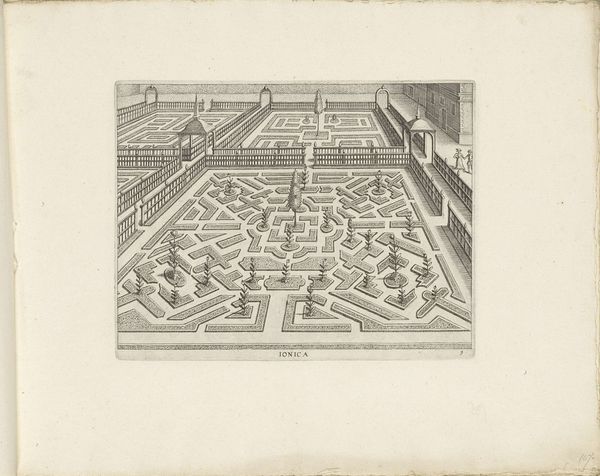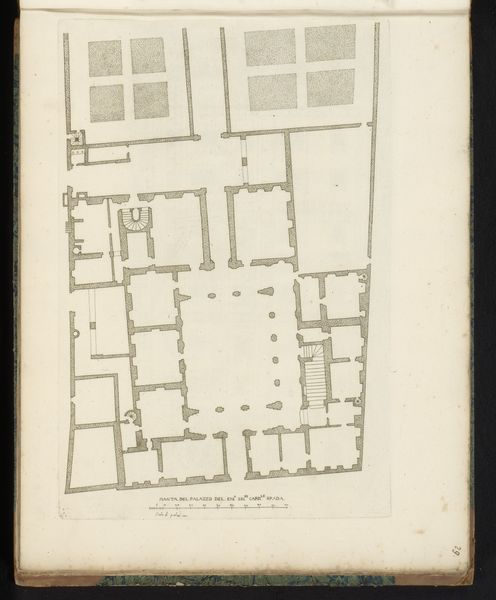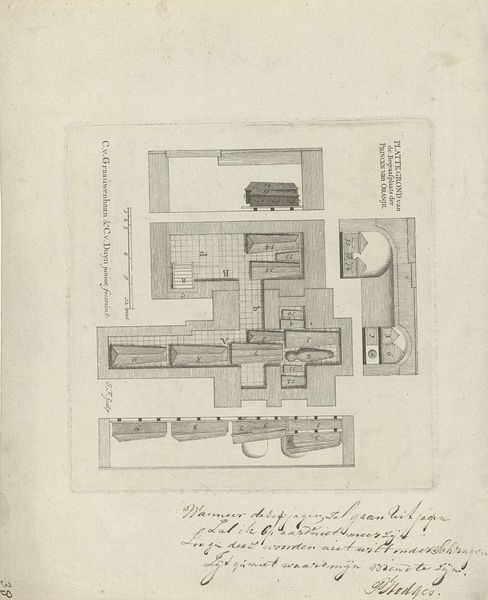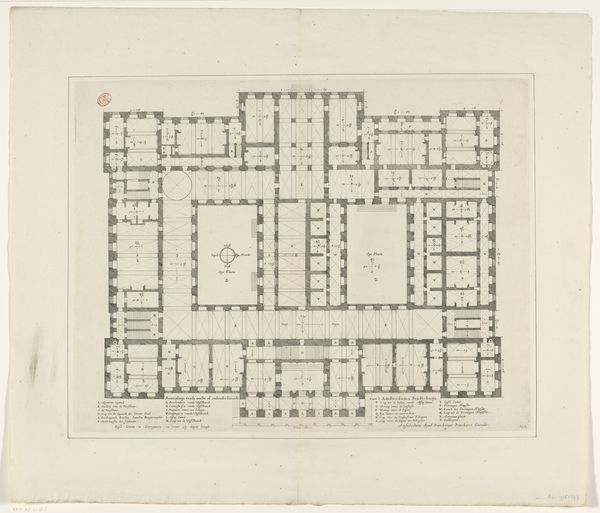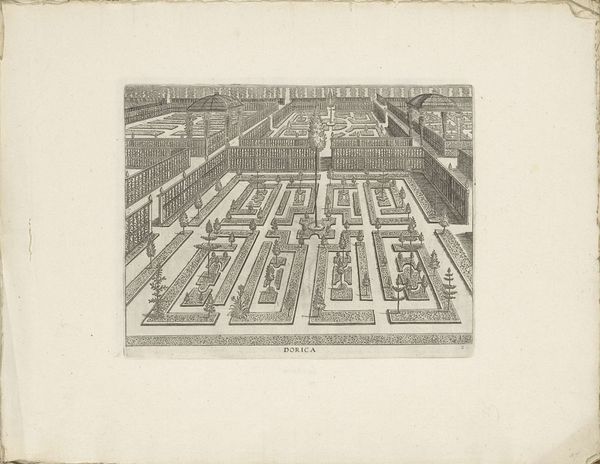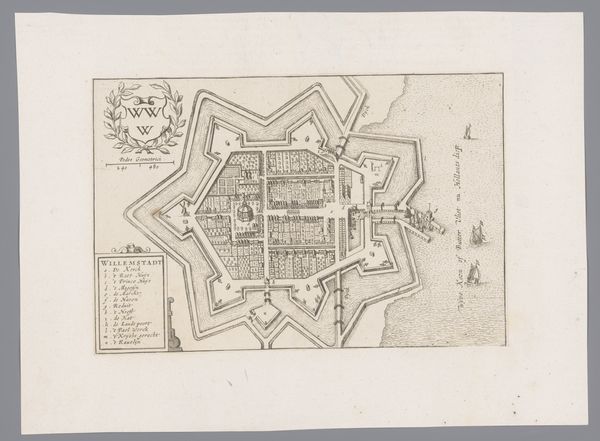
Plattegrond van het Huis ter Nieuburch met tuinen bij Rijswijk, 1726 1726
0:00
0:00
print, engraving
#
baroque
# print
#
old engraving style
#
landscape
#
cityscape
#
engraving
Dimensions: height 200 mm, width 278 mm
Copyright: Rijks Museum: Open Domain
Curator: Before us, we have an engraving from 1726 titled “Plattegrond van het Huis ter Nieuburch met tuinen bij Rijswijk," an aerial plan depicting the House ter Nieuburch and its gardens near Rijswijk. It's currently held at the Rijksmuseum. Editor: Immediately, the rigorous geometry strikes me. The stark contrasts of light and shadow emphasize the structured, almost regimented, layout of the gardens. There is a clear formal order. Curator: Precisely! The piece reflects the Baroque fascination with order and control. The House ter Nieuburch, now lost, was significant politically, most famously for hosting the Treaty of Rijswijk in 1697, marking a turning point in European power dynamics. This print serves not only as a record of a physical space, but also as a symbol of political order and the assertion of power through landscape. Editor: Note how the strict lines and right angles dictate the arrangement of space. Every tree, every hedge, seems placed with deliberate precision. It’s almost mathematical in its exactitude, less about nature and more about imposed structure. What is nature except an uninhibited material to which we, as creators of spaces, choose how to give new form? Curator: And it served a crucial function. Landscaping during the Baroque period wasn't merely decorative. Gardens were extensions of the palace, projecting an image of power and mastery. This print allows us to study the visual language through which such statements were communicated. The treaty being held at this location emphasizes this architectural plan's importance to world politics at the time. Editor: Looking closely at the technique, the linear quality of the engraving enhances this sense of precision. The lack of tonal variation—the stark blacks and whites—furthers the graphic nature. The gardens themselves almost resemble an intricate architectural diagram as a result. Curator: I agree. In its crispness, it mirrors the very essence of the period's emphasis on clarity and control. It reminds us how art acts as both a product of, and a participant in, its cultural and political milieu. Editor: A captivating fusion of precision and form then, truly representing not only the reality but the ideals of its historical moment. Curator: Indeed, a telling glimpse into the architecture of power of the time, rendered meticulously in ink and paper.
Comments
No comments
Be the first to comment and join the conversation on the ultimate creative platform.
